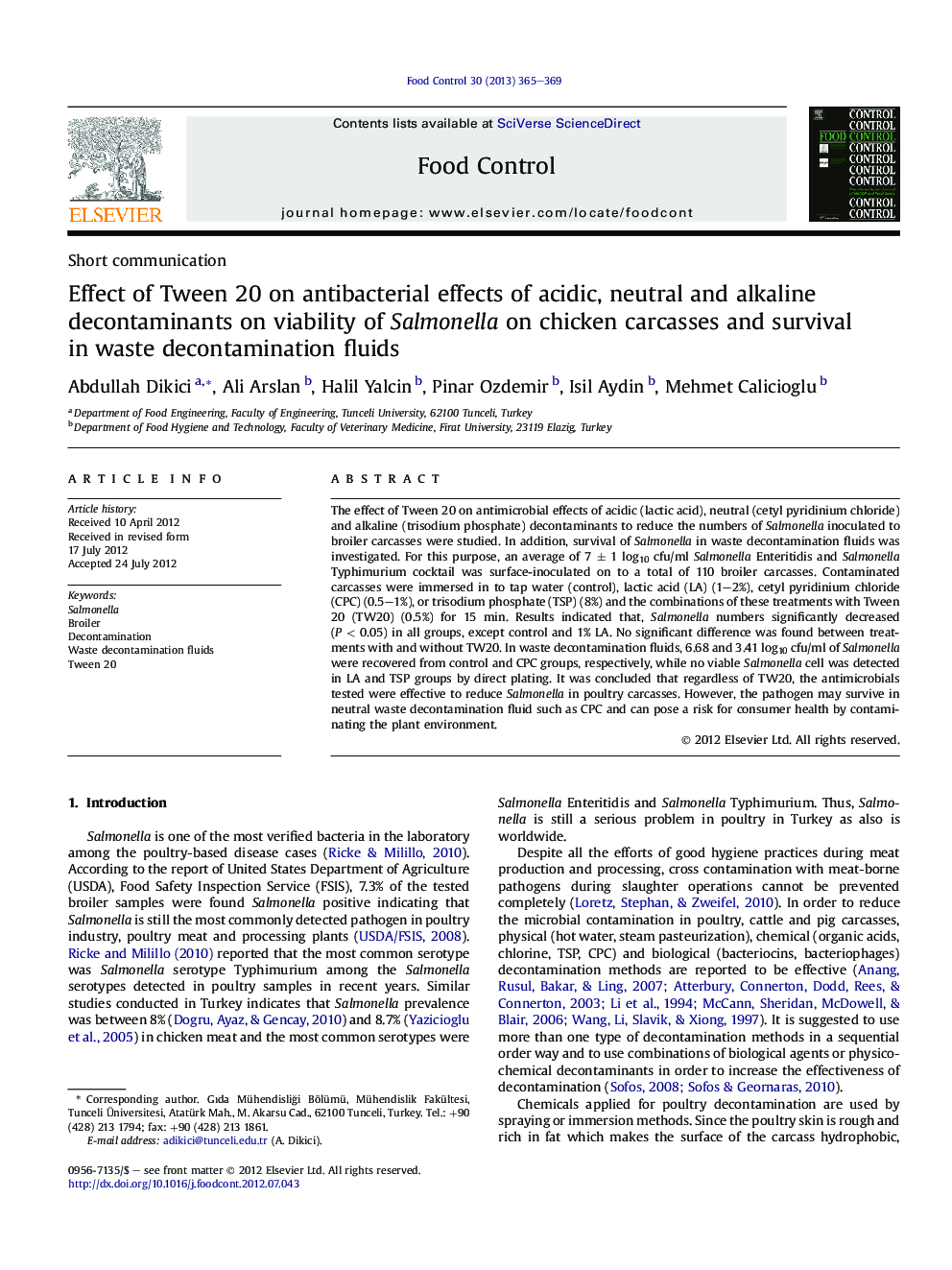| Article ID | Journal | Published Year | Pages | File Type |
|---|---|---|---|---|
| 4559436 | Food Control | 2013 | 5 Pages |
The effect of Tween 20 on antimicrobial effects of acidic (lactic acid), neutral (cetyl pyridinium chloride) and alkaline (trisodium phosphate) decontaminants to reduce the numbers of Salmonella inoculated to broiler carcasses were studied. In addition, survival of Salmonella in waste decontamination fluids was investigated. For this purpose, an average of 7 ± 1 log10 cfu/ml Salmonella Enteritidis and Salmonella Typhimurium cocktail was surface-inoculated on to a total of 110 broiler carcasses. Contaminated carcasses were immersed in to tap water (control), lactic acid (LA) (1–2%), cetyl pyridinium chloride (CPC) (0.5–1%), or trisodium phosphate (TSP) (8%) and the combinations of these treatments with Tween 20 (TW20) (0.5%) for 15 min. Results indicated that, Salmonella numbers significantly decreased (P < 0.05) in all groups, except control and 1% LA. No significant difference was found between treatments with and without TW20. In waste decontamination fluids, 6.68 and 3.41 log10 cfu/ml of Salmonella were recovered from control and CPC groups, respectively, while no viable Salmonella cell was detected in LA and TSP groups by direct plating. It was concluded that regardless of TW20, the antimicrobials tested were effective to reduce Salmonella in poultry carcasses. However, the pathogen may survive in neutral waste decontamination fluid such as CPC and can pose a risk for consumer health by contaminating the plant environment.
► Immersing chicken carcasses in to 2% LA, 0.5–1.0% CPC and 8% TSP significantly reduced Salmonella. ► 1% LA was not effective for reducing the pathogen. ► 0.5% Tween 20 did not influence the antimicrobial activity. ► Viable Salmonella cells were recovered from waste fluids of CPC treatment.
